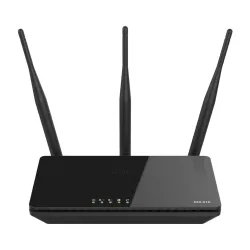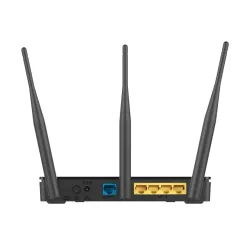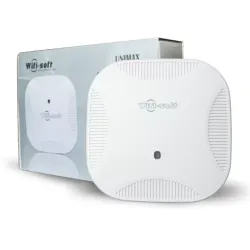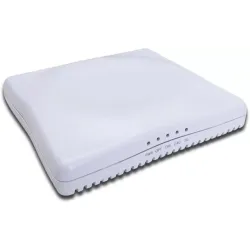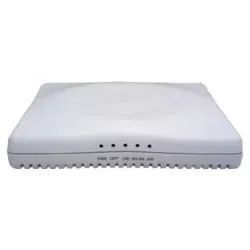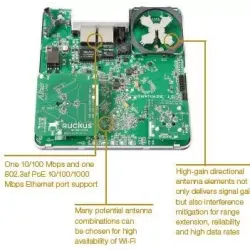The Benefits and Future of Access Point - Alcatel Lucent, Casio, Dell, HP, Juniper, NetApp, NVIDIA
What is Access Point?
An Access Point (AP) is a wireless networking device that allows wireless devices to connect to a wired network using Wi-Fi or other wireless protocols.
Access Points are typically used to extend the reach of a wired network, enabling wireless devices to connect to the network without the need for additional cables or physical connections. Access Points act as a bridge between the wireless devices and the wired network, allowing data to be transmitted back and forth between the two.
Access Points can be used in a variety of settings, including homes, offices, schools, airports, hotels, and other public spaces. They are an essential component of most wireless networks and play a vital role in enabling wireless connectivity for a wide range of devices, including laptops, smartphones, tablets, and IoT devices.
What are the Benefits of Access Points
Access Points provide several benefits for wireless networks, including:
Increased coverage area:
Access Points allow wireless signals to reach further than they would with a single router or another wireless device, enabling better coverage throughout a larger area.
Improved network performance:
By providing additional access points, wireless networks can support more users and devices, reducing network congestion and improving overall performance.
Seamless roaming:
Access Points allow devices to move seamlessly from one area of coverage to another without losing connectivity, enabling users to move around freely while staying connected to the network.
Simplified network management:
Access Points can be centrally managed and configured, making it easier for network administrators to monitor and maintain the network.
Enhanced security:
Access Points can support advanced security protocols like WPA2, ensuring that wireless traffic is encrypted and secure.
Cost-effective scalability:
As a wireless network grows, additional access points can be added as needed, making it easy to scale the network to meet changing needs without incurring significant costs.
Top 10 Access Point Brands and Models for 2023
As an AI language model, I don't have knowledge of future events, such as which Access Point brands and models will be the top performers in 2023. However, here are some current top Access Point brands and models that are popular among businesses and consumers:
Cisco Aironet 2800 Series
Aruba AP-555
Ubiquiti Networks UniFi AP AC LR
Ruckus Wireless ZoneFlex R710
Aerohive AP250
HPE Aruba Instant On AP11
EnGenius Neutron EWS357AP
TP-Link EAP225 V3
Meraki MR52
Netgear WAC740
The Importance of Access Point
Access Points play a critical role in enabling wireless connectivity in a wide range of settings, including homes, offices, public spaces, and more. Here are some key reasons why Access Points are important:
Extending wired networks:
Access Points allow wireless devices to connect to a wired network without requiring additional physical connections, enabling users to access network resources from anywhere within the coverage area.
Enabling mobility:
Access Points allow users to move around freely while staying connected to the network, enabling greater flexibility and mobility.
Enhancing network performance:
By providing additional access points, wireless networks can support more users and devices, reducing network congestion and improving overall performance.
Providing seamless roaming:
Access Points enable devices to move seamlessly between coverage areas without losing connectivity, ensuring that users can stay connected to the network even as they move around.
Supporting advanced security protocols:
Access Points can support advanced security protocols like WPA2, ensuring that wireless traffic is encrypted and secure.
The Features of Access Points
The future of Access Points (APs) is likely to involve further advancements in wireless networking technology, with a focus on improving network performance, security, and flexibility. Here are some potential trends and developments that could shape the future of Access Points:
Wi-Fi 6 and 6E:
Wi-Fi 6 (802.11ax) is the latest generation of Wi-Fi technology, offering higher speeds, greater capacity, and improved network efficiency. Wi-Fi 6E takes this a step further by expanding Wi-Fi into the 6 GHz frequency band, enabling even faster and more reliable wireless connections.
Mesh networking:
Mesh networking technology allows multiple Access Points to work together to form a seamless wireless network, providing better coverage and improved performance. Mesh networks can be easily expanded and configured, making them ideal for large-scale deployments.
Cloud-based management:
Cloud-based management platforms allow network administrators to remotely manage and configure Access Points from a central location, making it easier to monitor network performance and troubleshoot issues.
Artificial Intelligence (AI) and Machine Learning (ML):
AI and ML technologies can be used to optimize network performance, detect and mitigate security threats, and improve overall network efficiency.
Increased security:
Access Points are likely to incorporate more advanced security features, including intrusion detection, threat prevention, and encryption, to protect against a growing range of cyber threats.
An access point is a networking device that enables wireless devices to connect to a wired network. It acts as a central hub for wireless communication, allowing devices such as laptops, smartphones, and tablets to connect to the network and access the internet or other resources.
To find your access point, you can follow these steps:Open your computer's wireless network settings.
Look for the name of the network you are connected to.
Once you have identified the network, you can determine the access point by checking the network's details, which should include the access point's MAC address or IP address.
Alternatively, you can physically locate the access point by looking for the device itself, which is typically a small box with antennas and Ethernet ports. The access point is usually located near the center of the area it is intended to cover, such as in a hallway or on a ceiling.
An example of an access point is the Linksys Business LAPAC1200C Wireless Access Point, which allows multiple wireless devices to connect to a wired network and provides high-speed internet access. Other examples include the Ubiquiti UniFi AP AC Lite, the TP-Link EAP225 V3, and the NETGEAR WAC104 Wireless Access Point.
Autonomous access points: These are standalone devices that can be configured and managed independently.
Controller-based access points: These access points require a central controller device to manage and configure them. The controller manages the access points and ensures that they work together as a cohesive wireless network.





